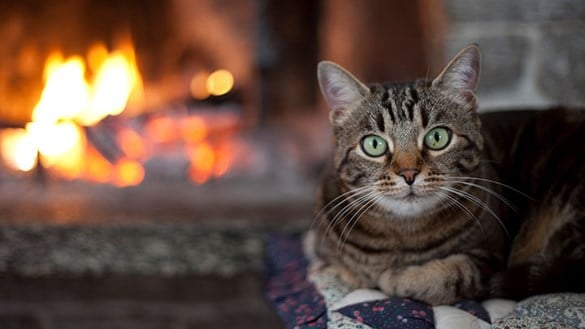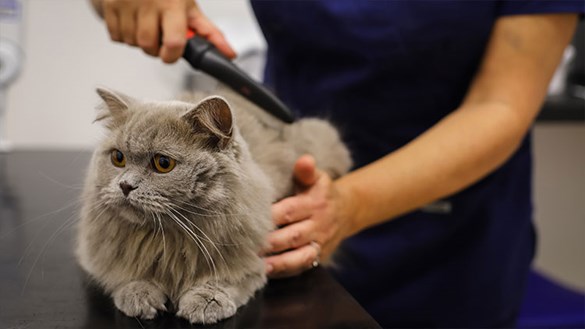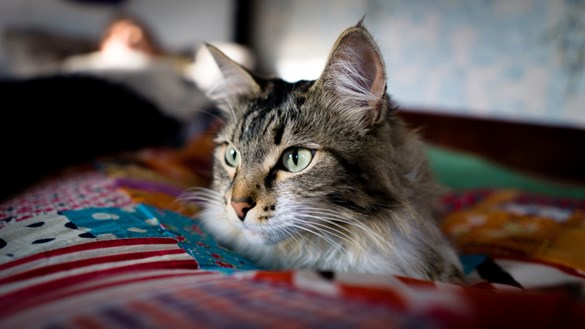Caring For Your Cat In Snow And Freezing Temperatures
Most cats aren’t lovers of really cold weather, preferring instead to be warm, snug and cosy indoors. Learn how to keep your outdoor cat safe in freezing temperatures.
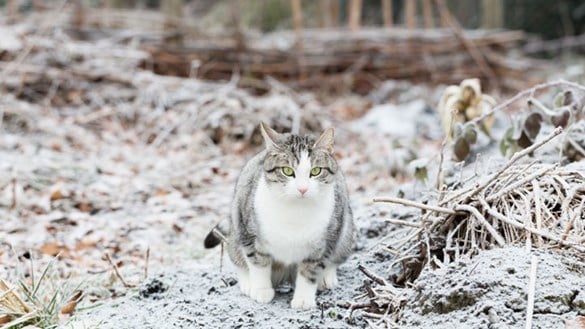
Keep cats warm, dry and safe
Keeping your cat warm and dry is the best way to make sure they’re happy when it’s freezing cold outside. Just like us, cats can suffer hypothermia and frostbite, so helping their body temperature stay at a comfortable level is key.
If it’s snowing, cats will opt for staying indoors, so you don’t need to worry about them getting too cold. However, if yours is the curious and adventurous type despite the weather conditions, you’ll need to keep an eye on them during freezing and snowy weather and limit the amount of time they spend outside. Always provide a warm, comfortable place for them to return home to with plenty of fresh water to keep them hydrated.
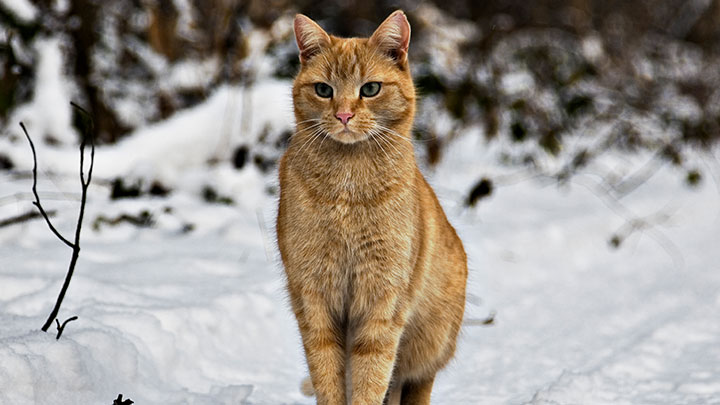
If you don’t have a cat-flap, it’s best to only allow your cat outside when you’re at home to let them back in. This means they can go out for a quick toilet break and come home quickly.
If your cat really doesn’t want to go out and normally goes to the toilet outside, provide an indoor litter tray in a private corner to reduce the number of times they need to venture out. Don’t forget to change their litter every day and clean it out with cat-friendly disinfectant at least once a week.
Cats tend to seek warm refuge in a variety of areas, including garden sheds and garages. If possible, leave doors ajar and double-check before you close up to avoid locking your cat inside – it’s a good idea to ask your close neighbours to do the same. Similarly, warm, parked cars can be irresistible to cold cats, who are known to curl up under the engine or in the wheel arch. Make sure you check these areas and make plenty of loud noises to give them time to escape before you start the car. A few quick knocks on a window should do the trick.
Cat flaps can easily freeze up or become blocked by snow; check them regularly to make sure your cat can come back in whenever they need to.
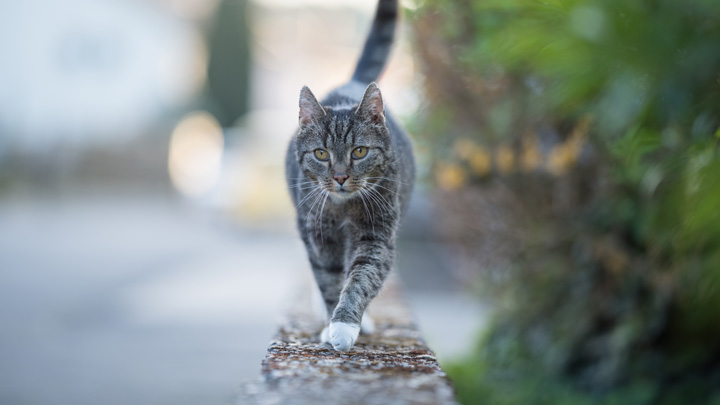
Protect your cat's paws
Icy weather and snow can wreak havoc on your cat’s delicate paws.
Rock salt is often used in combination with sand or gravel to grit icy roads and pavements, but it can damage paw pads. Prolonged contact can sometimes lead to chemical burns, dryness and painful cracking. Not only that, but rock salt is also toxic to pets if swallowed, so always wash their paws as soon as they return home to prevent them from licking it off themselves.
If your cat’s paws are looking chapped and sore, it's best to seek the advice of your vet.
Long-haired breeds often have excess fur around their paws and belly that can become clogged with hard ice balls, causing pain and discomfort for your cat. Remember to regularly brush around the paws, legs and belly to prevent build-up.
Hypothermia in cats
Hypothermia can occur when a cat’s body heat drops to extremely low levels, usually after being exposed to freezing temperatures or as a result of having wet fur in cold, windy weather.
Symptoms include shivering (although this will suddenly stop when their temperature reaches dangerously low levels), pale lips and gums, low energy and a loss of coordination. Hypothermia is an emergency, so if you spot any of these symptoms, contact your vet immediately.
To prevent hypothermia in a cold snap, make sure your pet has somewhere warm and dry to go after they’ve been out of the house. If it’s particularly cold, you may also want to limit their time spent outdoors. Providing an indoor litter tray means they also don’t need to ‘go’ outside in freezing temperatures.
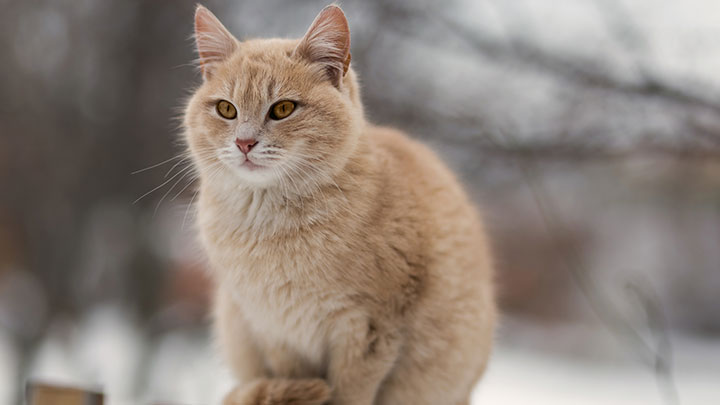
Cats and snow
Cats can be uncertain when it comes to snow, with some being more curious than others. Whether your cat likes to play in it, or avoid it, making sure they’re kept warm, safe and dry is key.
Snowstorms can result in reduced visibility and less grip on icy roads for drivers, putting adventurous cats at risk. Try and encourage your cat not to venture out in snowy weather and keep them inside overnight when temperatures can drop dramatically. To keep them entertained, make sure they have plenty of toys and a scratching post and interact with them regularly – this should keep them happy.
Frostbite in cats
Frostbite can occur in very low temperatures; this can freeze their extremities (the tips of their ears, tail and toes). Although not usually life-threatening, it can lead to hypothermia which can be fatal.
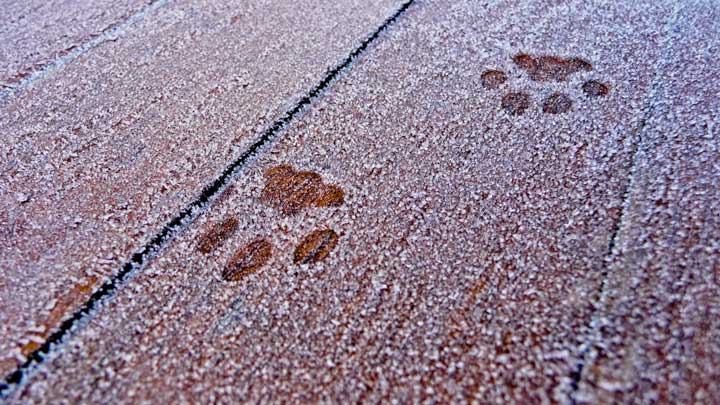
Skin can become very pale with a blue-white hue, due to the lack of blood flow, and ice can even form around the area. To prevent it from progressing and putting the local tissue at risk, apply a warm towel to the affected area. Never use a hairdryer or radiator to directly warm them up; this can cause burns and blistering. Instead, use tepid water to warm the area gradually and speak to your vet.
Antifreeze risk for cats
Containing the toxin ethylene glycol, antifreeze can have a devastating effect on cats when swallowed. Leaky car radiators can leave puddles of sweet-tasting antifreeze on driveways and just one tablespoon can be fatal to cats. Public fountains and water features also contain antifreeze to stop them from freezing over.
Sadly, antifreeze poisoning is often fatal, but the quicker your cat receives treatment, the better their chances of survival. The first signs of antifreeze poisoning include staggering, excessive thirst and vomiting; these are soon followed by loss of appetite, diarrhoea, seizures, and ultimately, kidney failure. If you spot any of these signs in your cat, take them to your vet immediately.
Try to avoid using antifreeze, but if you have to, look for the type that contains propylene glycol which is much safer for pets. Keep containers securely closed and always clean up leaks and spills as soon as possible.
Kittens and older cats in winter
Just like humans, kittens and older cats can suffer more in sub-zero temperatures, as can cats with ongoing health issues. This is because their immune system is less effective in fighting off potential illness as a result of the cold weather. If your cat falls into one of these categories, pay extra attention to their welfare and whereabouts in very cold or snowy weather and always make sure they have a warm, dry space to sleep and rest in.
If you need further advice or help in how to care for your cat in freezing conditions, please speak to your local Medivet.
For more advice on freezing weather care for your cat, speak to your local Medivet practice.

Medivet Healthcare Plan
On average our clients save an average of £225 with the Medivet Healthcare Plan.
Learn more


